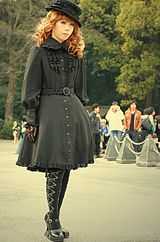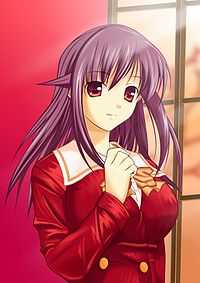Japanese popular culture
Japanese popular culture not only reflects the attitudes and concerns of the present but also provides a link to the past. Japanese cinema, cuisine, television programs, anime, manga, and music all developed from older artistic and literary traditions, and many of their themes and styles of presentation can be traced to traditional art forms. Contemporary forms of popular culture, much like the traditional forms, provide not only entertainment but also an escape for the contemporary Japanese from the problems of an industrial world. When asked how they spent their leisure time, 80 percent of a sample of men and women surveyed by the government in 1986 said they averaged about two and one-half hours per weekday watching television, listening to the radio, and reading Japanese newspapers or magazines. Some 16 percent spent an average of two and one-quarter hours a day engaged in hobbies or amusements. Others spent leisure time participating in sports, socializing, and personal study. Teenagers and retired people reported spending more time on all of these activities than did other groups.
In the late 1980s, the family was the focus of leisure activities, such as excursions to parks or shopping districts. Although Japan is often thought of as a hard-working society with little time for pleasure, the Japanese seek entertainment wherever they can. It is not unusual to see train commuters enjoying their favorite manga or listening through earphones to pop music on portable music players, although as of 2014 the mobile phone is ubiquitous.
A wide variety of types of popular entertainment are available. There is a large selection of music, films, and the products of a huge comic book industry, among other forms of entertainment, from which to choose. Game centers, bowling alleys, and karaoke parlors are well-known hangout places for teens while older people may play shogi or go in specialized parlors.
Kawaii
Kawaii is a Japanese term which means "cute" and "beautiful". Cuteness seems to be a highly valued aesthetic quality in Japanese society and particularly Japanese pop culture, and overpowering cuteness seems to carry less of the stigma of infantilization as it does in many other cultures. Kawaii is pronounced Ka-wa-ee (not to be confused with kowai, Ko-wai, the Japanese term for "scary"). Kawaii can be used to describe animals and people, including fully grown adults; while attractive women are usually described as kawaii, young men are more likely to be described as kakkoii, Kak-ko-ee, which is "good looking" or "cool". Kawaii is also used to describe some men who are considered to have "cute" personalities.
Mascots
Kawaii in Japan has been a growing trend for many Japanese markets; they have been used in school all the way to large enterprises. The use of cute childish figures representing a certain groups allows for those potentially frightened by them to have these playful mascots that represent them to create a sense of humanity between them. An example would be the Tokyo Metropolitan Police Department mascot known as Pipo-kun, which is an orange-skinned, elfin creature with rabbit ears that are made to listen to the people and an antenna to stay in tune with what is happening. The use of Kawaii in public relations has been a large factor for many and will continue to be used by those who want to have an optimistic view of them.[1]
One type of mascot in Japan that are noted for their 'Kawaii-ness' are characters known as 'yurukiyara' (or the mascots that represent their respective prefectures). Each year Japan celebrates a new winner and this year's current number one is Bari-san from Ehime prefecture. Despite this, however, his popularity pales in comparison to that of last year's champion: Kumamon (the Mon Bear) of Kumamoto prefecture. Having pulled in over 2.5 billion yen in merchandise sales across the nation this past year, he is widely adored and can be found in almost any novelty shop in Japan.[2]
Geinōkai
Geinōkai is the world of Japanese entertainment, encompassing everything from movies and television (including talk shows, music shows, variety shows, etc.) to radio and now the Internet. Geinōjin is a term, often used interchangeably with talent (transliterated as タレント, tarento), which refers to members of the Geinōkai. Talent refers to a rather large group of people who appear on television from night to night, but cannot be quite classified as actors, singers, or models, or comedians (and are thus given the more vague appellation of "talent" instead). Talents usually appear on variety shows or talk shows and may later move into acting or singing if they are successful.
Manga
The word Manga, when translated directly, means “whimsical drawings”. Manga are typically not 'comic books' as the West understands them; rather, they represent pieces of Japanese culture and history. The 'manga' style has an extensive history, beginning sometime in the 10th century; scrolls from that period depict animals as part of the 'upper class', behaving as a typical human would in similar situations. Such scrolls would go on to be known as the Chōjū giga or “The Animal Scrolls”.[3]
Scrolls found later on in the 12th century would depict images of religion such as the Gaki Zoshi (Hungry Ghost Scrolls) and the Jigoku zoshi (Hell Scrolls). While both dealt with various aspects of religion, unlike “The Animal Scrolls”, these provided a more instructive viewpoint, rather than a comedic style.[4]
Manga are more significant, culturally, than Western comic books (though many fill the same role). Originally, manga were printed indaily newspapers; in the Second World War, newsprint rationing caused a downsurge in manga popularity. In the post-war 1950s, they made a resurgence in the form of “picture card shows”, which were a style of storytelling supplemented by the use of illustrations, and the highly popular “rental manga” that would allow their readers to rent these illustrated books for a period of time.[5]
Anime
Anime is a movie or episode of sorts which utilizes an animated cartoon art style to convey a story. Unlike Western cartoons, anime frequently tends to have more detailed character design. This can be used to allow for a better connection between the viewer and the character. Anime is based most of the time on animated comics or manga, which is an ancient form of comic writing which dates all the way to the 12th century.[6]
The world of animated films in Japanese popular culture has been a growing trend since the 1920s. Influenced by Walt Disney and his animated characters, Osamu Tezuka (1925–1989), also known as "manga no kamisama" (which means, "God of Comics")[7] would begin his forty year evolution of animation, or anime, that would change the content of Japanese comic books. With the creation of his first animated character Astroboy that was unlike any other animated character; he found the hearts of the Japanese public with a robotic boy who has spiky hair, eyes as big as fists, with rockets on his feet.[8]
Through the decades in which anime has been created, there have been various types of genre which have been made. They include various types from mechs to sci-fi; all have their own meaning when being made and have a representation on Japanese society.[9] Such as the anime film Howl’s Moving Castle (film) made in 2004, which entitled many anti-war themes within it and by doing so made it more influential on the Japanese community. The growth of anime over the decades has been very important culturally for Japan because anime allows for a common ground to be explored.[10]
Anime have expanded in such a way in Japanese culture that they have been made into by products that sell toys, clothing lines, and even many have been turned into video games to allow for a broader market to be touched.
Fashion

Japan began to emulate Western fashion during the middle of the 19th century. By the beginning of the 21st century, this emulation has formed street fashion, a fashion style in which the wearer customizes outfits by adopting a mixture of current and traditional trends. Such clothes are generally home-made with the use of material purchased at stores.
At present, there are many styles of dress in Japan, created from a mix of both local and foreign labels. Some of these styles are extreme and avant-garde, similar to the haute couture seen on European catwalks.
Though the styles have changed over the years, street fashion is still prominent in Japan today. Young adults can often be found wearing subculture attire in large urban fashion districts such as Harajuku, Ginza, Odaiba, Shinjuku and Shibuya.
Film
The most popular Japanese films is the giant monster films (Kaiju Eiga) of Godzilla, Gamera, and the Ultraman Series. These Kaiju films were extremely popular in the 1960s and 1970s as the Kaiju Boom of Japan.
Games
Music
Television
See also
- Japan
- Akihabara
- Culture of Japan
- Otaku
- Western Style Weddings in Japan
- Pachinko
- Japanese pop culture in the United States
- Lolita fashion
- Japanophilia
- Internet in Japan
References
- ↑ Matt Alt and Hiroko Yoda. Hello, Please! Very Helpful Kawaii Characters from Japan. Chronicle Books, 2007, 240 pages.
- ↑ asianbeat.com/en/feature/culture_watch/37.html
- ↑ Mark Wheeler Macwilliams. Japanese Visual Culture: Exploration in the World of Manga and Anime. M.E. Sharpe, 2008, 352 pages.
- ↑ Mark Wheeler Macwilliams. Japanese Visual Culture: Exploration in the World of Manga and Anime. M.E. Sharpe, 2008, 352 pages.
- ↑ Sharon Kinsella. Adult Manga: Culture and Power in Contemporary Japanese Society. University of Hawaii, 2000, 228 pages.
- ↑ Tze-yue G. Hu: Frames of Anime: Culture and Image-Building. Hong Kong University Press, 2010.
- ↑ Drazen, P: Anime Explosion!: the what? Why? & wow! of Japanese animation. Stone Bridge Press, Inc., 2003.
- ↑ Drazen, P: Anime Explosion!: the what? Why? & wow! of Japanese animation. Stone Bridge Press, Inc., 2003.
- ↑ Tze-yue G. Hu: Frames of Anime: Culture and Image-Building. Hong Kong University Press, 2010.
- ↑ Tze-yue G. Hu: Frames of Anime: Culture and Image-Building. Hong Kong University Press, 2010.
- Mark Schilling (1997), The Encyclopedia of Japanese Pop Culture, ISBN 978-0-8348-0380-0

